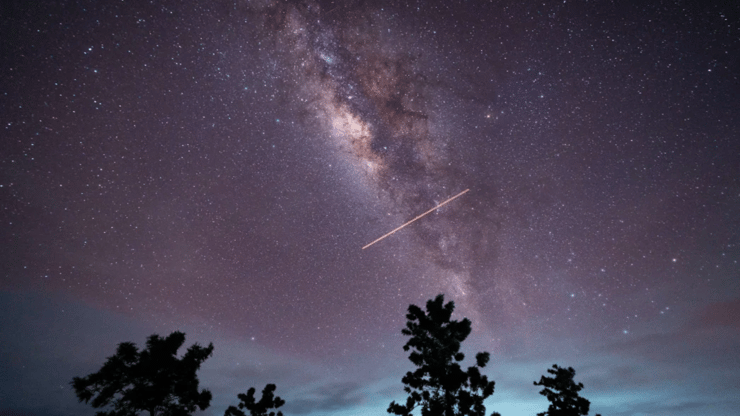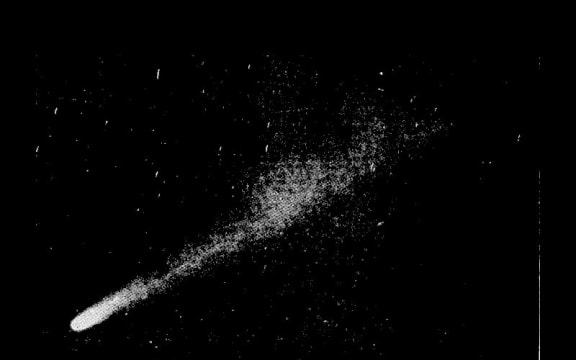How To Watch A Stunning Meteor Shower Over NZ This Week

One of the best meteor showers in the Southern Hemisphere, the Eta Aquariids, will be visible in New Zealand this week.
Here's how you can catch a glimpse of it and what you need to know.
Firstly, what is the Eta Aquariids?
The Eta Aquariids is a meteor shower caused by the Earth passing through a trail of debris orbiting the Sun that's left behind by Halley's Comet.
"Small bits of ice, dust, and rock fall into our atmosphere and high speeds, burning up and creating the meteors, commonly known as shooting stars," says Stardome Observatory and Planetarium's Josh Aoraki.
The annual meteor shower takes place in early May each year.
Aoraki says it's one of the best and most reliable meteor showers for us in the Southern Hemisphere "so it's a great time to see a celestial light show".

Halley's Comet as photographed on May 4, 1910. Photo: Alexander Turnbull Library
How can I watch it?
While you should be able to catch a glimpse of the celestial light show throughout the week, Thursday will likely be the best day - but prepare for an early morning, peak viewing time is after the Moon has set, between 3am and 6am..
"All you need is a clear sky and an unobstructed view of the north-eastern sky looking toward the constellation Aquarius," Aoraki says.
You won't need a telescope, just look for Venus shining brightly
MetService is forecasting chilly nights and mornings this week so you'll want to wrap up warm if you're heading outside.
Where's the best place to see it?
While it'll be visible to anyone in New Zealand, anyone living in a city should head out to somewhere with clear, dark skies for the best viewing experience.
Under dark skies you could see between 10 and 50 meteors per hour but patience will be key.
Will I be able to get a photo on my phone?
Unfortunately this is probably not one of those experiences you'll be able to capture on your phone, unless you're able to take a decent long exposure photo, Aoraki says.
"You will need a professional camera or DSLR camera to capture this. Smartphones are not good in low light and most do not have great long-exposure settings.
"Any camera that has a long exposure setting of around 30 seconds should be able to capture a few meteors streaking across the sky if you set up a timelapse."
This article was first published by RNZ





Leave a Comment